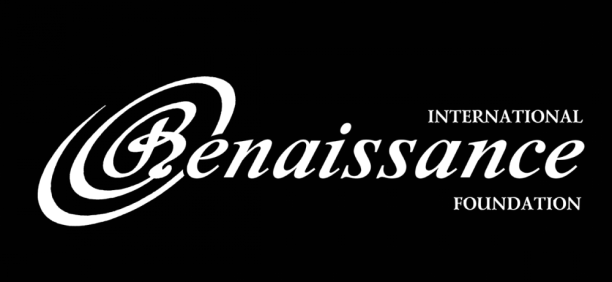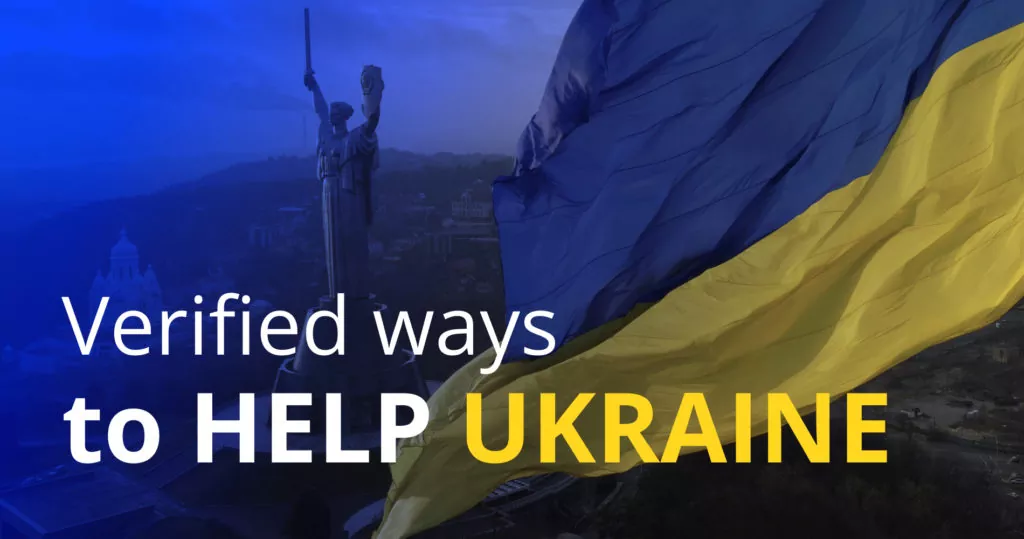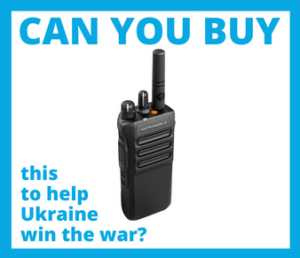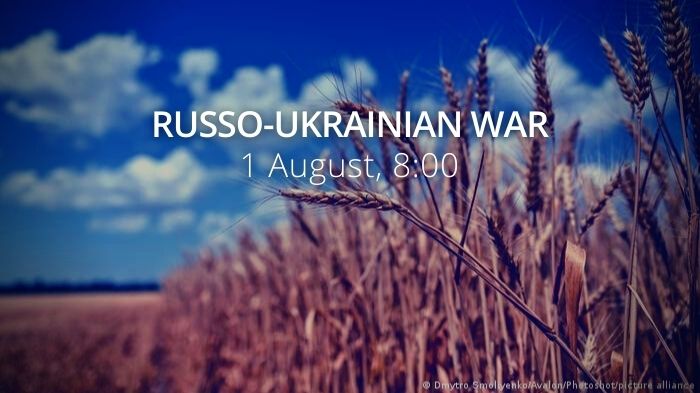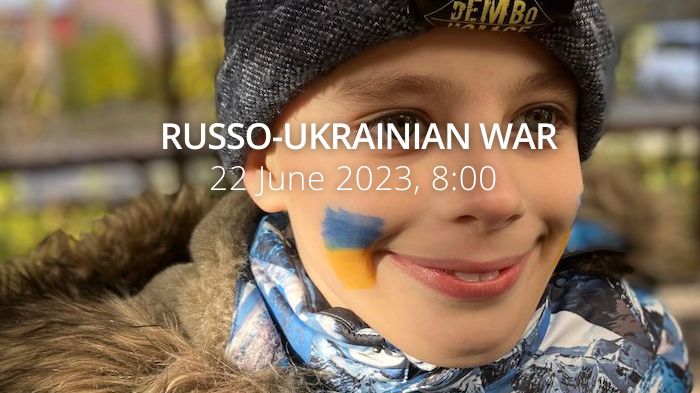Ukraine not involved directly in events in Belgorod Oblast – President’s Office. “Counter-terrorist operation” regime declared in Russia’s Belgorod region. Ukrainian army made small gains near Bakhmut over the past day.
UK @defencehq highlights the ongoing clashes between Russian forces and unidentified partisans in Russia's Belgorod Oblast, noting that Russia's facing "an increasingly serious multi-domain security threat in its border regions."https://t.co/CQXdQtgDbk
— Euromaidan Press (@EuromaidanPress) May 23, 2023
Daily overview — Summary report, May 23
A map of the approximate situation on the ground in Ukraine as of 00:00 UTC 22/05/23. pic.twitter.com/GgkZRl07gx
— War Mapper (@War_Mapper) May 22, 2023
The General Staff’s operational update regarding the Russian invasion as of 18.00 pm, May 23, 2023 is in the dropdown menu below:
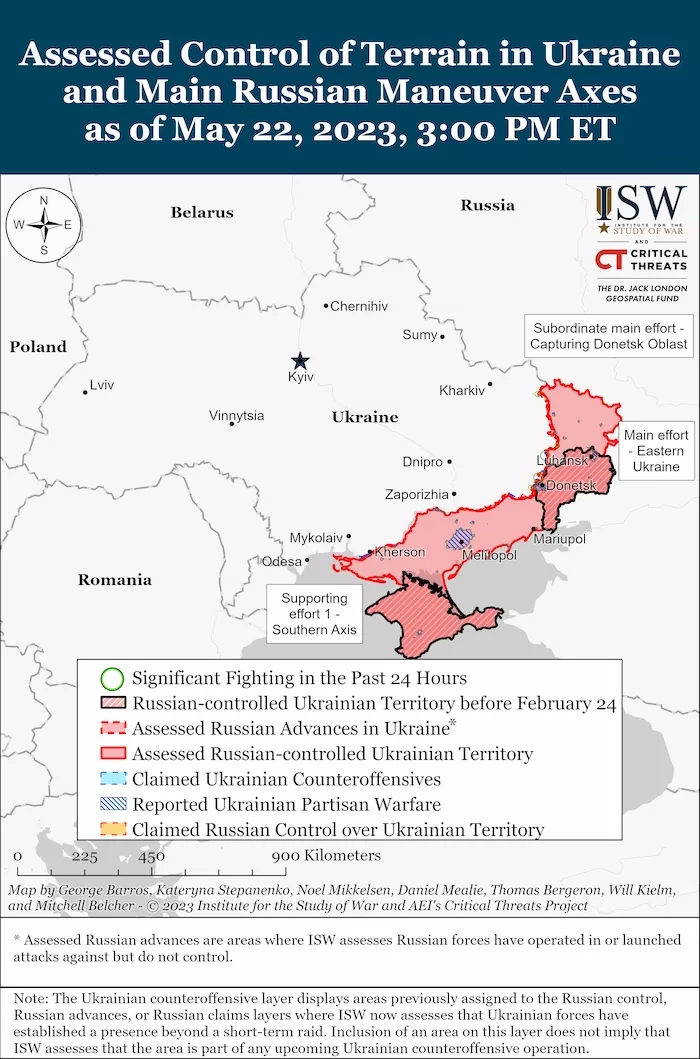
The Russian Federation continues to wage its war of aggression and does not stop launching strikes, as it shells military and civilian targets alike. [The Russian Federation does not cease its plans to occupy our territory. Russian forces cynically continue to use terror tactics.]
Preliminary information: last night, Russian forces used up to 4 Shahed UAVs for attacks, and all of them were intercepted. The information is being updated.
On May 22, the adversary launched 20 missile strikes. The invaders fired airborne missiles, Iskander-M ballistic missiles and S-300 anti-aircraft guided missiles at the cities of Dnipropetrovsk, Zaporizhzhia, and Kharkiv oblasts. In addition, the occupiers launched 48 airstrikes using Iranian Shahed combat UAVs.
Also, the Russian aggressors launched 90 MLRS attacks at the positions of Ukrainian troops and various settlements. The attacks have wounded civilians and damaged private residential apartment buildings, private houses, kindergartens, and other civilian infrastructure.
The likelihood of further missile and air strikes across Ukraine remains very high.
The adversary continues to focus its main efforts on Kupiansk, Lyman, Bakhmut, Avdiivka, and Marinka axes, with more than 30 combat engagements taking place. Bakhmut and Marinka remain at the epicentre of the fighting.
- Volyn and Polissya axes: [the operational situation has not changed significantly, there are no signs of the formation of offensive groupings.]
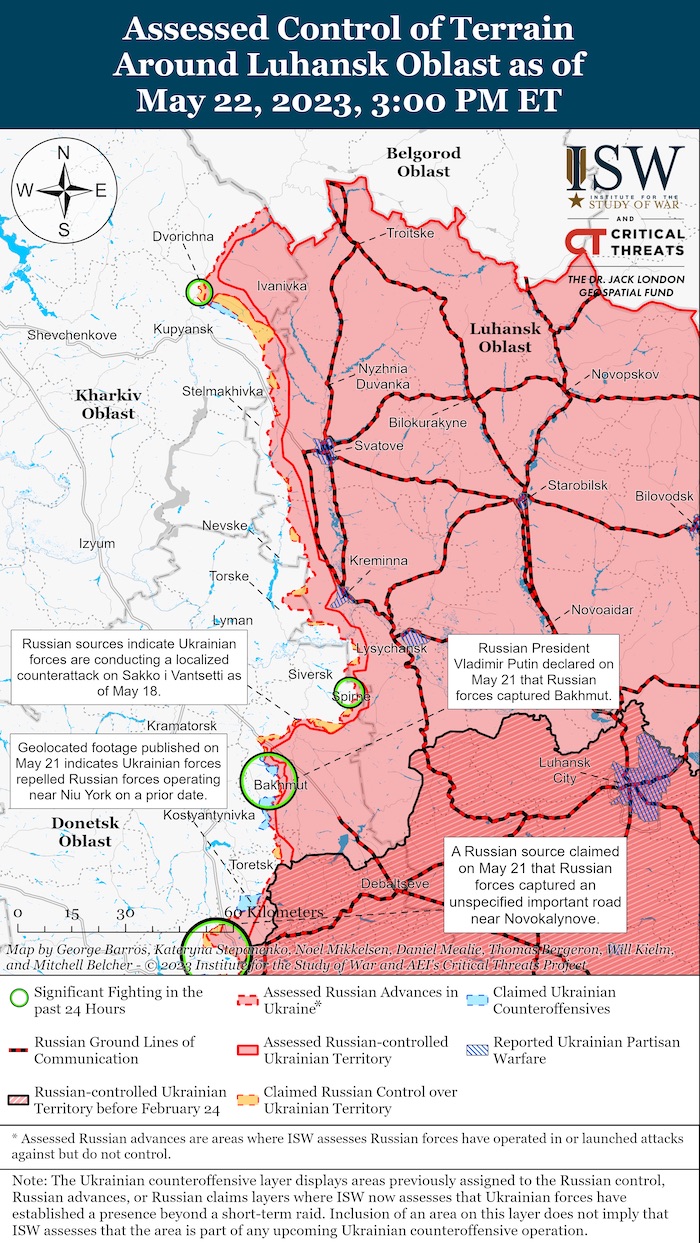
- Sivershchyna and Slobozhanshchyna axes: the adversary continues to maintain a military presence in the areas of Russia bordering Ukraine. On May 22, the invaders launched airstrikes in the vicinities of Oleksiivka and Sosnivka (Chernihiv oblast). The occupiers fired mortars and artillery at the settlements of Karpovychi, Tymonovychi, Halahanivka, Zarichchya (Chernihiv oblast), Starykove, Khodyne, Hirky, Budky, Katerynivka, Tymofiivka, Oleksandrivka, Yunakivka, Myropillya, Popivka, Dmytrivka (Sumy oblast), Morozova Dolyna, Shevchenka, Kozacha Lopan’, Hoptivka, Luk’yantsi, Zelene, Starytsya, Hatyshche, Pletenivka, Vovchans’k, Varvarivka, Nesterne, Budarky, and Chuhunivka (Kharkiv oblast).
- Kupiansk axis: Russian forces conducted unsuccessful offensives in the vicinity of Masyutivka (Kharkiv oblast). The invaders launched airstrikes near Orlyans’ke, Kyslivka, and Tabaivka (Kharkiv oblast). The adversary fired artillery and mortars at Kam’yanka, Fyholivka, Novomlyns’k, Dvorichna, Zapadne, Kup’yans’k, Husynka, Tabaivka, Berestove (Kharkiv oblast), and Stel’makhivka (Luhansk oblast).
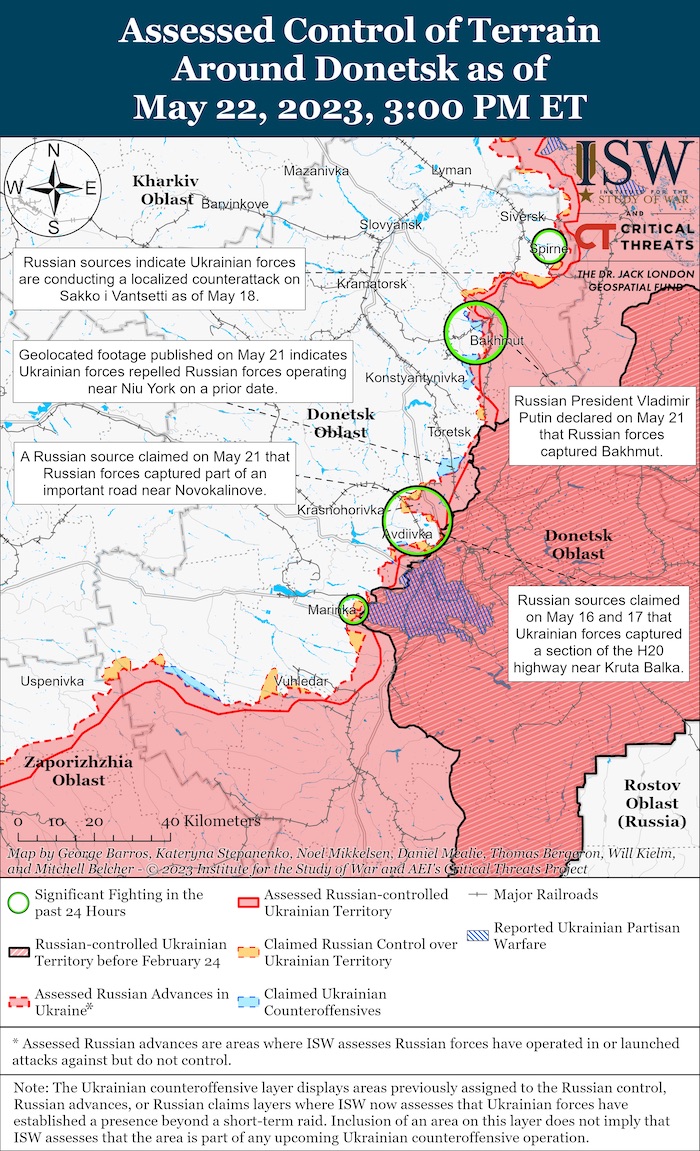
- Lyman axis: the occupiers conducted unsuccessful offensives in the vicinity of Bilohorivka (Luhansk oblast). The invaders also launched at Bilohorivka and near Verkhn’okam’yans’ke (Donetsk oblast). Nevske, Bilohorivka (Luhansk oblast), Tors’ke, Spirne, and Vesele (Donetsk oblast), among other targets, were shelled with artillery.
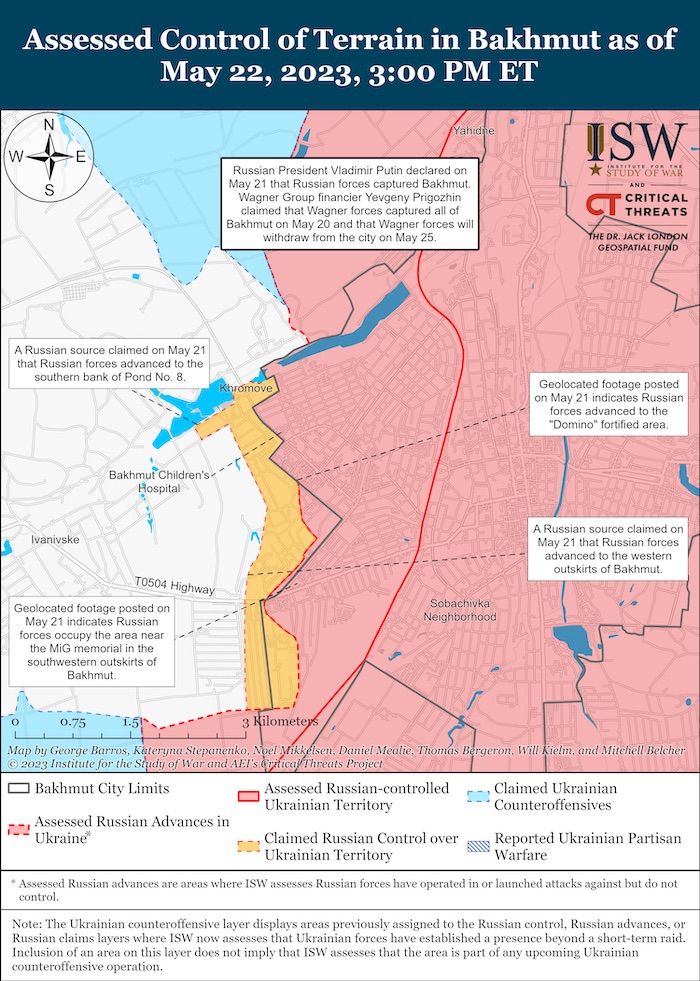
- Bakhmut axis: Russian forces continue their offensive operations. Fighting for the city of Bakhmut continues. The adversary launched airstrikes in the vicinities of Bakhmut, Ivanivske, and Bila Hora. Vasyukivka, Orikhovo-Vasylivka, Markove, Hryhorivka, Bakhmut, Ivanivske, Stupochky, Bila Hora, Toretsk, Pivnichne, Pivdenne, and New York (Donetsk oblast) suffered from enemy shelling.
- Avdiivka axis: the adversary conducted unsuccessful offensives towards Novokalynove, Severne, Vodyane, and Pervomais’ke. On May 22, the invaders launched airstrikes near Avdiivka and Pervomaiske. The occupant forces fired artillery in the vicinities of settlements of Novokalynove, Berdychi, Avdiivka, Vodyane, Pervomais’ke, and Karlivka (Donetsk oblast).
- Marinka axis: numerous enemy attacks were repelled in the vicinity of the city of Marinka. The nearby village of Pobjeda also came under enemy fire.
- Shakhtarske axis: the adversary did not conduct any offensive The invaders launched airstrikes in the vicinities of the settlements of Vuhledar, Prechystivka, and Zolota Nyva. The invaders shelled the settlements of Vuhledar, Novoukrainka, and Prechystivka.
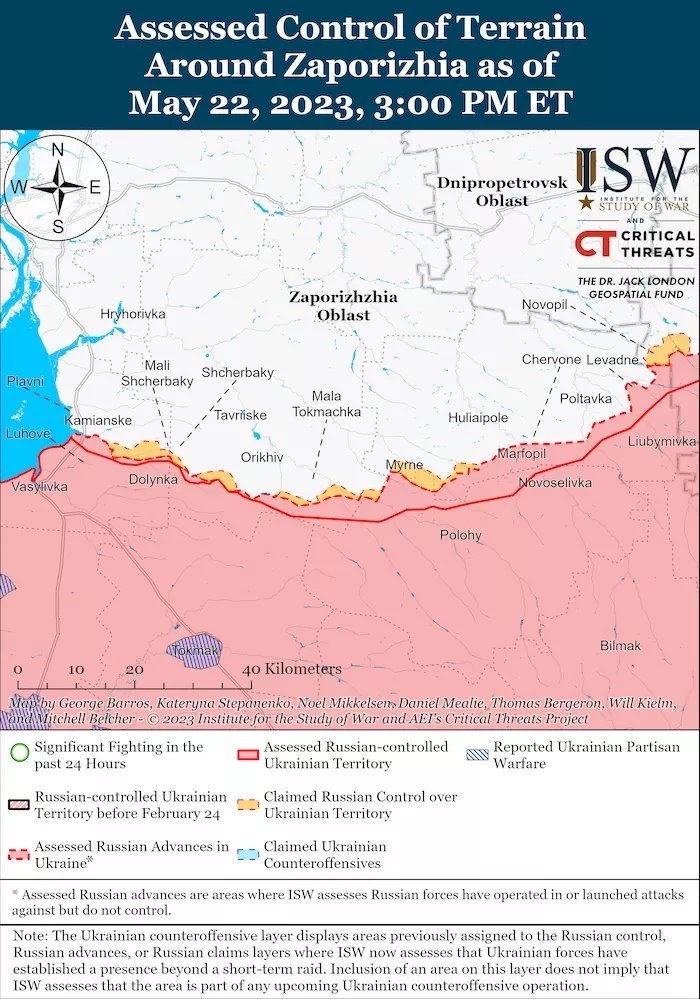
- Zaporizhzhia and Kherson axes: the adversary stays on the defensive. On May 23, the invaders launched airstrikes in the vicinities of Malynivka, Mala Tokmachka, and Novodanylivka (Zaporizhzhia oblast). The occupiers shelled the settlements of Vremivka, Novopil’ (Donetsk oblast), Ol’hivs’ke, Hulyaipole, Bilohir’ya, Mala Tokmachka, Novodanylivka, Novoandriivka, Mali Shcherbaky (Zaporizhzhia oblast), the city of Zaporizhzhia; Kachkarivka, Vesele, Kozats’ke, Antonivka, Stanislav (Kherson oblast), and the city of Kherson.
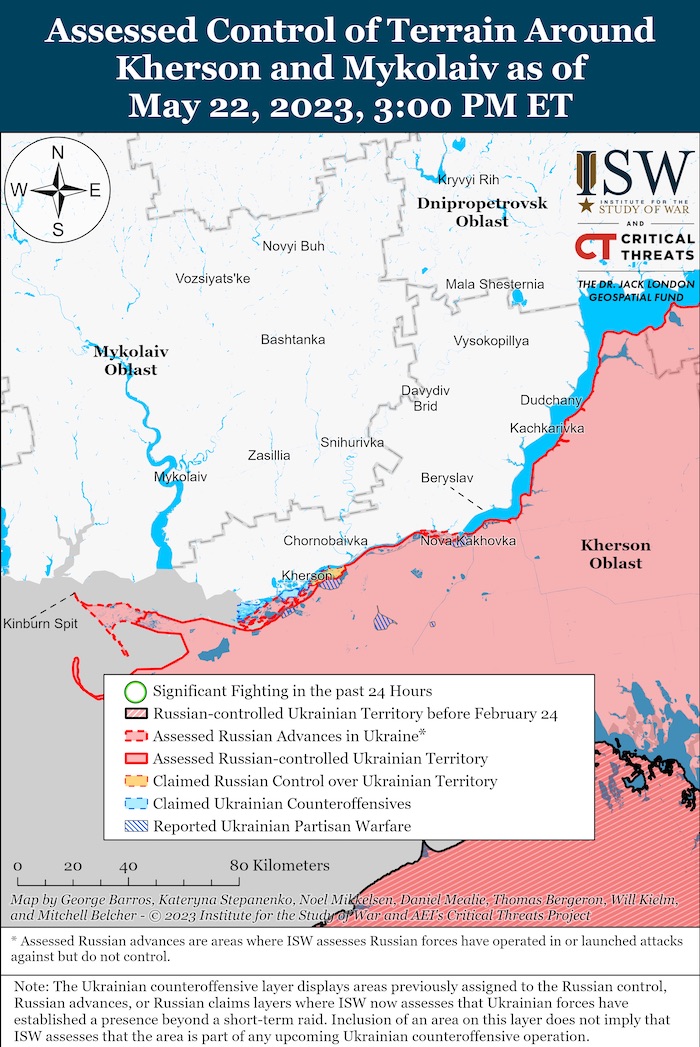
On May 22, the Ukrainian Air Force launched 8 air strikes on the concentrations of troops and military equipment of the adversary, as well as 2 air strikes on the anti-aircraft missile systems.
On May 22, the Ukrainian Defense Forces destroyed 4 Kh-101/Kh-555 airborne cruise missiles, 1 Russian Mi-24 attack helicopter, 23 Shahed combat UAVs and 9 reconnaissance UAVs of Russian forces.
The Ukrainian missile and artillery troops hit 4 command posts, 3 concentrations of weapons and military equipment, 4 ammunition depots, 11 artillery assets, 1 radar station, and 3 electronic warfare stations of the Russian occupiers.
Military Updates
https://twitter.com/EuromaidanPress/status/1660798697331130373
AFU recaptured up to 400 m near Bakhmut over the past day – Cherevatyi, Ukrinform reports, citing the spokesperson for the Eastern Grouping of the Armed Forces of Ukraine Serhii Cherevatyi. “In the past 24 hours, the Armed Forces of Ukraine (AFU) have managed to recapture 200 to 400 meters in various areas near the Donetsk region’s Bakhmut. The enemy is trying to seize the city of Bakhmut. It is their priority objective, Cherevatyi mentioned.
In his words, Russian troops are making attempts to capture the southwestern part of Bakhmut, where Ukraine’s Defense Forces are maintaining control over a number of buildings and fortification structures. Meanwhile, on the flanks, our units are trying to put pressure on the enemy and, whenever possible, counterattack them as part of our defensive operation. In particular, over the past day, we have managed to recapture 200 to 400 meters in various areas, Cherevatyi told.”
6 Russian Shahed drones were destroyed last night, Ukrainska Pravda reports, citing the Command of the Air Force of Ukraine and Air Command Pivden (South). “The Ukrainian Air Force Command reported that on the night of 22-23 May, six Russian Shahed-136/131 attack UAVs were destroyed on different fronts.
Air Command Pivden (South) reported that the air defence assets and personnel from Air Command Pivden destroyed two Russian Shahed-136/131 attack UAVs last night in Mykolaiv Oblast. In addition, on 22 May, one Merlin-VR reconnaissance UAV was destroyed in Kherson Oblast.
On the morning of 23 May, the General Staff of the Armed Forces of Ukraine reported that over the past 24 hours, a total of 34 drones of various types and purposes, as well as four cruise missiles, had been destroyed (as early as the night of 22 May).”
Ukraine destroyed 20 attack UAVs and four cruise missiles, the Ukrainian General Staff reports. “On the night of May 22, 2023, Russian invaders attacked military and infrastructure facilities in the city of Dnipro. The attack was carried out by 16 missiles of various types and 20 attack drones “Shahed-136/131”.
In general, the enemy released 4 Kh-101/Kh-555 air-launched cruise missiles from Tu-95ms strategic bombers from the Caspian Sea region; 5 Kh-22 cruise missiles from Tu-22m3 long-range bombers from different directions – the Sea of Azov and the Kursk region; 2 “Iskander-M” ballistic missiles from the temporarily occupied Crimea; 5 S-300 anti-aircraft guided missiles from the temporarily occupied territory of the Zaporizhzhia region. 20 “Shahed” strike drones from the south and north.
During the night attack on May 22, four Kh-101/Kh-555 cruise missiles and 20 Shahed attack drones were destroyed by air defence forces.
Another minus one enemy plane! At the end of the day on May 21, a Russian Su-35 fighter jet crashed in the territorial waters of Ukraine, in the Kherson region! The circumstances that caused it are being clarified.”
Ukraine’s artillerymen destroy a convoy of Russian military vehicles in the Donetsk region, Ukrinform reports, citing the 28th Separate Mechanized Brigade named after the Knights of the First Winter Campaign on Facebook. “The artillerymen of the 28th Separate Mechanized Brigade destroyed a convoy of the occupiers. At least 10 enemy equipment units are now ‘adorning’ the Donetsk region’s fields, the report states.”
Russia battles cross-border raids; nothing to do with us, says Ukraine, Reuters reports. “Russia said on Monday it was battling a cross-border incursion by saboteurs who burst through the frontier from Ukraine, in what appeared to be one of the biggest attacks of its kind since the war began last year. The governor of Russia’s Belgorod region said a Ukrainian “sabotage group” had entered Russian territory in the Graivoron district bordering Ukraine, and was being repelled.
But the Ukrainian outlet Hromadske cited Ukrainian military intelligence as saying two armed Russian opposition groups, the Liberty of Russia Legion and the Russian Volunteer Corps (RVC), both consisting of Russian citizens, had carried out the attack.
Kremlin spokesman Dmitry Peskov said Russian President Vladimir Putin had been informed and that work was underway to drive out the “saboteurs”, the state-run RIA Novosti news agency reported. A senior aide to Ukrainian President Volodymyr Zelenskyy said Kyiv had nothing to do with the incursion, putting it down to Russia’s emerging violent resistance movement.
Belgorod governor Vyacheslav Gladkov said on Telegram that the Russian army, border guards, presidential guards and the FSB security service were involved in the operation. He said at least six people had been wounded and three houses and an administrative building damaged. The Telegram channel Baza, which has links to Russia’s security services, said there were indications of fighting in three settlements along the main road leading into Russia. The “Open Belgorod” Telegram channel said power and water had been cut off in several villages. […]
A group calling itself the Liberty of Russia Legion – a Ukraine-based Russian militia led by Russian opposition figure Ilya Ponomarev that says it is working inside Russia for Putin’s overthrow – said on Twitter it had “completely liberated” the border town of Kozinka. It said forward units had reached the district centre of Graivoron, further east. “Moving on. Russia will be free!” it wrote.”
Ukraine says its troops advance around devastated Bakhmut, Reuters reports. “Ukraine said on Monday its troops were still advancing on the flanks of the devastated eastern city of Bakhmut, although the “intensity” of their movement had decreased and Russia was bringing in more forces. Russia said on Saturday it had completely taken Bakhmut, but Ukrainian officials have said since then that Kyiv’s forces still control a small part of the city.
Deputy Defence Minister Hanna Maliar reiterated on Monday that Ukraine had a small foothold inside the city itself. Through our movement on the flanks – to the north and south – we manage to destroy the enemy, she said in televised comments. By moving along the flanks and occupying certain heights there, our armed forces have made it very difficult for the enemy to stay in the city itself. We are still advancing, but the intensity is somewhat reduced, she said. […]
Maliar later wrote in a post on the Telegram messaging app that Ukrainian troops still controlled “certain private facilities and the private sector in the ‘Litak’ area”. The enemy is sweeping the areas of the city under its control, he wrote. The struggle for dominant heights continues on the flanks – the north and south of the suburbs. Our fighters do not give the enemy the opportunity to gain a foothold there.
Reiterating Kyiv’s aims in defending Bakhmut, she wrote: The enemy’s offensive potential has been significantly reduced, huge losses have been inflicted on the enemy (and) we have gained time for certain actions which will be discussed later.”
According to British Defence Intelligence, (last 48 hours):
https://twitter.com/DefenceHQ/status/1660968868351803392
- Between 19 and 22 May 2023, Russian security forces highly likely clashed with partisans in at least three locations within Russia’s Belgorod Oblast, near the Ukrainian border. The identity of the partisans remains unconfirmed, but Russian anti-regime groups claimed responsibility.
- The most serious incident took place near the town of Grayvoran. As well as small-arms fire fights, there was an uptick in drone or indirect fire attacks near the incidents. Russia has evacuated several villages and has deployed extra security forces to the area.
- Russia is facing an increasingly serious multi-domain security threat in its border regions, with losses of combat aircraft, improvised explosive device attacks on rail lines, and now direct partisan action. Russia will almost certainly use these incidents to support the official narrative that it is the victim in the war.
- Russia is highly likely creating a new ‘elite’ attack aviation group code-named ‘Shtorm’ to operate over Ukraine. The unit is likely to consist of at least one squadron of Su-24 FENCER and Su-34 FULLBACK fighter-bombers, and a squadron of attack helicopters.
- The mix of aircraft types suggests the group will have a primary role of ground attack missions. Credible Russian media reports suggest that the Russian MoD aims to attract highly skilled and motivated pilots by offering large pay incentives and opening recruitment to retired aviators.
- The creation of the group highlights how Russian assesses its regular air force squadrons have severely underperformed in their core function of conducting airstrikes on Ukrainian lines.
Losses of the Russian army
Russia's approximate losses on day 454 of its invasion of Ukraine, according to Ukraine's General Staff pic.twitter.com/OTvWNEDePz
— Euromaidan Press (@EuromaidanPress) May 23, 2023
As of Tuesday 23 May, the approximate losses of weapons and military equipment of the Russian Armed Forces from the beginning of the invasion to the present day:
- Personnel – about 204360 (+480)
- Tanks – 3789 (+4)
- Armoured combat vehicles – 7419 (+12)
- Artillery systems – 3318 (+40)
- Multiple rocket launchers –MLRS – 565 (+0)
- Air defence means – 327 (+0)
- Aircraft – 309 (+1)
- Helicopters – 295 (+1)
- Automotive technology and fuel tanks – 6139 (+10)
- Vessels/boats – 18 (+0)
- UAV operational and tactical level – 2864 (+34)
- Special equipment – 433 (+6)
- Mobile SRBM system – 4 (+0)
- Cruise missiles – 1015 (+4)
Russia cuts training of contracted convicts to just 10 days amid mounting death toll, Ukrinform reports. “The Russian military leadership made a decision to reduce to 10 days the training period for personnel contracted from among convicts. That’s according to a morning situational update by the General Staff of Ukraine’s Armed Forces.
According to the General Staff, earlier, about 1,000 reinforcements were brought to the said camp from Russian penal colonies. The initial training period was four weeks.”
Budanov addresses Russian soldiers: It’s going to get even worse, Ukrainska Pravda reports, citing the Defence Intelligence of Ukraine (DIU). “Major General Kyrylo Budanov, the head of [DIU], has addressed Russian servicemen, urging them to surrender because it’s going to get even worse.
For more than a year now, the Kremlin regime has not been able to achieve any of the goals it set at the beginning of the invasion of Ukraine. I am appealing to Russian servicemen, to those who were lucky enough to survive the meat grinder and the beaten-up trenches – it’s going to get even worse. You have a choice: to die or to save your life. Budanov told the Russian soldiers what they need to do to survive – in particular, about the I Want To Live project, which helps servicemen of the Russian Federation leave active military service by surrendering to Ukraine.
He says Ukrainian special forces have already brought hundreds of Russian soldiers across the front line: Now they are safe, living in decent conditions, under the supervision of the International Committee of the Red Cross, with three meals a day and the opportunity to call home and receive parcels. Budanov added that all who surrender through the I Want To Live project are registered as captured in battle, so they can still receive their combat payments and salary in Russia.”
Humanitarian
https://twitter.com/EuromaidanPress/status/1660899593549230081
Russian troops conduct “population census” of occupied territories of Kherson Oblast, Ukrainska Pravda reports, citing the press service of the National Resistance Center. “The Russians are conducting the so-called “population census” in the temporarily occupied territories of Kherson Oblast. Their goal is to check if civilians of the region own Russian passports. Those who have not yet received a Russian passport, are being threatened and forced to acquire such a passport as soon as possible.
The census is being conducted by the military. They are checking the people and looking for the partisans among them.”
Ukrainian agriculture suffers $40.2B in losses due to Russia’s war – KSE, Ukrinform reports. “According to estimates by the Center for food and land use research at the Kyiv School of Economics (KSE Agrocenter), the Ukrainian agricultural sector suffered USD 40.2 billion in direct and indirect losses as a result of Russia’s full-scale war.
It is noted that the Ukrainian agriculture sector suffered USD 8.7 billion in direct losses (USD 2.1 billion more than estimated in November 2022). Most of the losses, namely USD 6 billion, are due to destroyed and damaged agricultural machinery and storage facilities for manufactured products.
Indirect losses amounted to USD 31.5 billion (USD 2.76 billion less than estimated in November last year). Most of the losses in this category were due to a decrease in crop production, which accounted for almost half of all indirect losses (14.3 billion). According to the center, the industry needs at least USD 29.7 billion to recover.”
'Our guys are here somewhere': Meet the Ukrainian unit tasked with finding fallen soldiershttps://t.co/db8wzBC7YZ
— Euromaidan Press (@EuromaidanPress) May 23, 2023
Environmental
Ukrenergo resumes powering of ZNPP from Ukrainian energy system, Ukrainska Pravda reports, citing a statement by Ukrenergo. “Due to a Russian attack, the ZNPP switched to a blackout mode for the seventh time since the beginning of its occupation in 2022.
Ukrenergo, the Ukrainian national energy company, has reported that the power line, which powers the Zaporizhzhia Nuclear Power Plant has resumed working, and the power plant itself will be powered from the Ukrainian energy system.
Despite the morning Russian attack, the energy system of Ukraine is operating stably. The produced energy is enough to cover the consumers’ needs. Unfortunately, the energy infrastructure has been damaged. High-voltage lines of 330-750 kW have been damaged in Dnipropetrovsk Oblast, which resulted in one of the most powerful power stations in the region being deactivated, and the same goes for a number of Ukrenergo substations and distribution system operators (oblenergo).
Three consumers in Zaporizhzhia have been powered down. Power engineers have powered the consumers according to reserve powering schemes. The energy production is being gradually resumed. As a result of a high-voltage line being damaged, the ZNPP was no longer powered by the energy system of Ukraine and operated on diesel generators.”
Grossi: We must agree to protect ZNPP, this situation cannot continue, Ukrinform reports. “The IAEA Director General Rafael Mariano Grossi said that the situation at Zaporizhzhia NPP is “extremely vulnerable” […]. This morning lost all external electricity for 7th time during conflict, forcing it to rely on emergency diesel generators for power, nuclear safety situation at the plant extremely vulnerable. We must agree to protect plant now; this situation cannot continue – the statement reads.
As Ukrinform reported earlier, as a result of Russian shelling on the night of 22 May, the last high-voltage transmission line, the 750 kV Dniprovska, which supplied power to Zaporizhzhia NPP, was disconnected. […] According to Energoatom, after the loss of external power, which is vital for the operation of the nuclear cooling pumps at the power units, all diesel generators at the plant were switched on automatically, and the fuel supply will last for ten days.
If it is not possible to restore external power to the plant during this time, an accident with radiation consequences for the whole world may occur. Energoatom emphasised that the continued occupation of ZNPP by Russia is constantly worsening the conditions for maintaining the plant on the verge of a nuclear and radiation accident. The Russian nuclear terrorism “must stop immediately, and the invaders must leave the territory of the plant and the satellite city of Enerhodar.”
First stage of Tylihul wind farm launches in Mykolaiv region – Zamazeeva, Ukrinform reports, citing the head of the State Agency on Energy Efficiency and Energy Saving of Ukraine (SAEEES), Anna Zamazeeva. “We are talking about 19 wind turbines, 390 million kWh of electricity per year, providing energy to 200,000 households minus 400,000 tonnes of CO2 emissions per year. This is the result of launching only the first stage of the 114 MW Tylihul wind farm, Zamazeeva wrote. […]
In her opinion, this result is even more significant because 13 of the 19 wind turbines launched were installed during martial law after Russia’s invasion. In the future, Zamazeeva added, after all four planned stages are completed, Ukraine will receive a 1.7 million tonnes per year reduction in CO2 emissions in addition to electricity generation.”
Legal
NATO PA Recognises Russia’s Crimes against Ukraine as Genocide, European Pravda reports. “According to Yehor Cherniev, the head of Ukraine’s permanent delegation to the NATO Parliamentary Assembly, a declaration was adopted during the session of the assembly in Luxembourg that includes unanimous support from parliamentarians of NATO countries for an international tribunal, assistance to Ukraine during and after the victory.
Furthermore, the document recognises Russia’s crimes against Ukraine as genocide, condemns the ideology of ruscism, supports the restoration of territorial integrity, sanctions, reparations, and also the “Marshall Plan” for Ukraine, the MP points out. We achieved the adoption of an extremely strong declaration at the session of the assembly in Luxembourg that will have far-reaching political consequences, Cherniev stated.
Additionally, the Assembly called on its member countries’ governments to openly declare at the summit in Vilnius that Ukraine will join the Alliance and to agree on specific steps for Ukraine’s NATO accession. This is our diplomatic victory. All our key requests regarding the final text of the declaration have been taken into account, Cherniev adds.
The MP emphasises that thanks to this decision, the foundation for the NATO summit in Vilnius has been laid. He added, Parliamentarians of the Alliance countries have expressed their position. Now it’s up to the governments.”
Sexual crimes of Russian army during war are systematic policy of Russia, – Ministry of Defense, Censor.net reports, citing Deputy Minister of Defense Hanna Maliar and Ukrinform. “Sexual crimes committed by Russian troops on the territory of Ukraine prove that this is a systemic policy of Russia against the civilian population of Ukraine. The crimes of the Russian Federation are not only aggression in the literal sense but also a number of others, including sexual ones. … They are, in fact, fighting against the civilian population … Therefore, we are not just talking about sexual crimes, we are talking about acts of medieval brutality that our enemy shows against our civilian population, Maliar emphasized. She noted that sexual crimes have their own specifics.
If in peacetime we can simply characterize rape, and sexual violence as a sexual crime and, accordingly, the motivation there is the satisfaction of sexual passion, then in these circumstances it is also an act of domination of one army over others, it is an act of moral humiliation. This is done in order to demoralize society, to break our resistance, and therefore it is much broader than just sexual violence, explained the deputy minister.
In her opinion, sexual crimes are committed not only by the Russian military – it is a systematic action of the Russian state against the Ukrainian civilian population. According to her, the Ministry of Defense has a group that investigates this category of crimes and collects the necessary data.
We communicate with the military about this, and the Ministry of Defense has a group that works with our servicemen who have returned from captivity. Among them, 23% of women said that they know about facts of sexual violence against our citizens who were captured in enemy territory, and 15% of men know about it, said the representative of the Ministry of Defense.”
Support
https://twitter.com/EuromaidanPress/status/1660700143228801024
US Department of State declares providing F-16s to Ukraine as priority, Ukrinform reports. “Providing the F-16 fighter aircraft to Ukraine is a priority, and the United States will begin to implement that in the coming months. The relevant statement was made by Spokesperson for the US Department of State Matthew Miller during a press briefing in Washington on Monday.
So, with respect to the calculus of providing F-16 to Ukraine, the President [Joe Biden – Ed.] has made very clear that we will begin training the Ukrainian military to pilot F-16. And we will work with our allies and partners on the provision of F-16s to Ukraine, Miller noted. In his words, there are no announcements about when or how that will happen, or what countries the fighter jets will come from. But, it is a priority for us, and we will begin to implement that in the coming months, Miller stressed.”
F-16 supply to Ukraine will take several months at best – US Air Force, Ukrainska Pravda reports, citing CNN, quoting US Air Force Secretary Frank Kendall on 22 May. “We are not under any circumstances going to get F-16s or another Western fighter in significant numbers into the hands of the Ukrainian Air Force in something less than at least several months, Kendall told reporters.
A few months is a relatively quick timeframe, as according to a US Air Force official, it usually takes more than two years to train a new US pilot on this aircraft. Even a retraining course for an F-16 pilot who has been away from flying the aircraft for some time can take up to five months.”
“There is plenty to surprise Russia with”: Ukrainian Ministry of Defence lists advantages of F-16 jets, Ukrainska Pravda reports, citing the Military Media Centre (MMC) under the Ukrainian MoD. “The Ministry of Defence of Ukraine has highlighted the strengths of the modern multi-purpose F-16 fighter jet, which can ensure Ukraine’s advantage over the Russian invaders. […]
The F-16 is a multi-purpose fighter jet that, along with its direct purpose of air combat, can be used as a tactical bomber, air defence element and even a specialised electronic warfare aircraft. Therefore, the F-16 combines the functionality of all the primary Soviet aircraft in service with the Ukrainian Air Force today.
The variety of weapons this aerial vehicle can carry is truly impressive. Air-to-air missiles, particularly the basic AIM-7 and AIM-120 AMRAAM (the missiles in the latter modification are capable of hitting a target in homing mode at a distance of 180 km); air-to-ground missiles, particularly AGM-65 Maverick assault missile, anti-ship AGM-84 Harpoon, which Russia has faced in its ground version, the equally familiar anti-radar AGM-88 HARM, and the AGM-158 JASSM cruise missile from Lockheed Martin (HIMARS).
In its basic version, the latter is capable of hitting a target at a distance of 370 km. Various bomb types can also be used, particularly adjusted, free-fall, incendiary, and cluster bombs. To cut a long story short, there is plenty to surprise Russia with.
Although the F-16 is slightly inferior to the Soviet-made MiG-29 in terms of flight manoeuvrability, this minor difference is completely levelled by advanced electronics that allow for long-range hostile detection. The AN/APG-80 radar has a target detection range of almost 200 km, and the AN/AAQ-33 Sniper, AN/AAQ-13 LANTIRN or AN/AAQ-28 LITENING targeting containers allow for precise aiming at enemy targets.
The F-16 is the most mass-produced aircraft of the 4th generation. A total of about 4,600 fighters of this type have been produced, which is almost three times more than the MiG-29. Mass production implies a well-developed infrastructure that will be useful in servicing and maintaining the aircraft’s combat capabilities, while the shortage of parts for Soviet combat aerial vehicles will obviously increase.”
Ukrainian pilots to start training on F-16 soon – Dutch Foreign Minister, Ukrainska Pravda reports, citing RTL Nieuws. “Dutch Foreign Minister Wopke Hoekstra has announced that training of Ukrainian pilots on F-16 fighter jets will begin “very soon”. […] Hoekstra did not say whether the training would take place in the Netherlands. He reported that the Netherlands was joining efforts with Denmark, Norway and Belgium, and the minister did not want to disrupt cooperation with premature announcements.
Hoekstra also did not specify whether Dutch instructors would train Ukrainians and did not specify when the first Ukrainian pilots would be able to start training. However, he stressed that it will happen shortly. Whenever we made a fundamental decision, we usually resolved operational issues very quickly, the minister said. […]
Dutch Prime Minister Mark Rutte said a few days ago that the details of the F-16s delivery to Ukraine “will be worked out in the coming weeks.
EU High Representative Josep Borrell said on 22 May that training for Ukrainian pilots on the F-16s has begun. At the same time, there has been no confirmation of the start of the training from the European countries that are supposed to conduct them.”
NATO Discussing Security Model for Ukraine like Israel’s – WSJ, Ukrainska Pravda reports. “The security agreement, based on a proposal known as the Kyiv Security Compact, is expected to be signed following the NATO summit. According to The Wall Street Journal, the concept related to Ukraine’s further NATO membership is based on the Kyiv Security “Compact” from September 2022 by a working group led by the Head of the Office of the President, Andrii Yermak, and former NATO Secretary-General Anders Fogh Rasmussen.
An Israeli-style security agreement for Ukraine would give priority to arms transfers and advanced technology, Polish President Andrzej Duda said in an interview with The Wall Street Journal. Discussions on this matter are ongoing, including during President Joe Biden’s visit to Warsaw in February. According to Western officials interviewed by the WSJ, such an agreement for Ukraine could impact the course of the war with Russia, hindering Vladimir Putin’s intentions to drag it out with the hope of undermining political support for Ukraine in the US and certain European countries.
An American official, speaking anonymously, confirmed that discussions about the “Israeli model” of security for Ukraine are taking place, but there are no specifics at present. Senior officials in several European capitals, including Paris and Berlin, said they agreed in principle with the plan, which would involve a series of bilateral assurances within a multilateral framework.
NATO, Ukraine and other officials said they expect the parties to a security-guarantee compact to include the US, UK, Germany, and France. Ukraine’s President Volodymyr Zelenskyy insists that Ukraine will not agree to any alternative proposals that could replace its NATO membership. Ukraine will not accept any other decision at the NATO summit in Vilnius in July, except for real steps towards its membership in the Alliance, stated Foreign Minister Dmytro Kuleba.”
Lithuania’s foreign minister has praised the growing F-16 international coalition as an "important step forward," but urged allied nations to remember Kyiv also needs more of the Western weaponry that it is already receiving.https://t.co/a2rQJtS1fc
— Euromaidan Press (@EuromaidanPress) May 22, 2023
New Developments
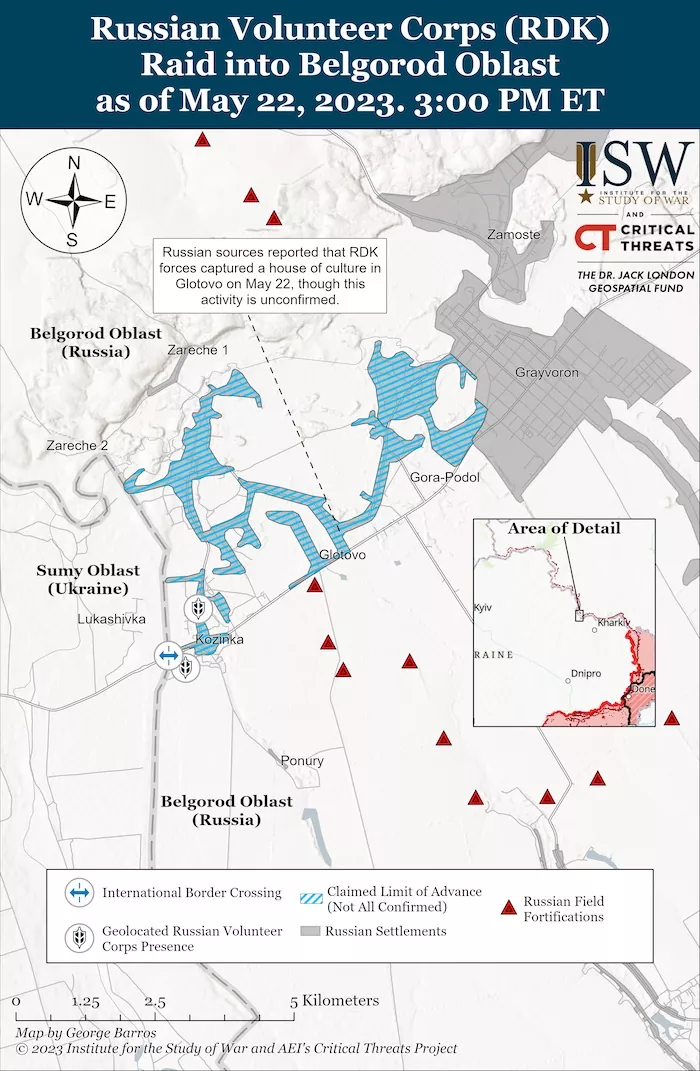
- “Counter-terrorist operation” regime declared in Russia’s Belgorod region, Ukrinform “The Governor of Russia’s Belgorod region, Vyacheslav Gladkov, announced the introduction of a counter-terrorist operation regime across the region. In order to guarantee the safety of citizens in Belgorod region, the legal regime of the counter-terrorist operation, which sets up special measures and temporary restrictions, has been introduced from today. Starting with the ID verification and ending with suspending operations of hazardous industries and organizations that use explosive, radioactive, chemically and biologically hazardous substances, Gladkov wrote.”
- Freedom of Russia Legion says they are creating a “demilitarised zone” in Russia, Ukrainska Pravda reports, citing Freedom of Russia Legion in a commentary for Suspilne, Ukraine’s public broadcaster. “The situation is complicated, the Legion and the Russian Volunteer Corps are creating a demilitarised zone on the border with the Russian Federation, so that [regular Russian forces] cannot attack Ukraine from that territory. Moving forward, we aim to liberate all of Russia from Putin’s dictatorship and to put an end to the criminal war.“
- Russians urgently evacuating nuclear stocks from Belgorod region – intel, Ukrinform reports, citing Andriy Yusov, a spokesman for the Defence Intelligence of Ukraine. “In an urgent manner, the Belgorod-22 facility – a nuclear ammunition storage – is also being evacuated by the Russists. It is not far from Grayvoron, said Yusov. He emphasized that part of Russia’s nuclear ammunition was stored at the site.”
- US Department of State reacts to events in Belgorod Oblast, Ukrainska Pravda reports, citing Matthew Miller, Spokesperson for the US Department of State. “We have made very clear to the Ukrainians that we don’t enable or encourage attacks outside Ukrainians’ borders, but I do think it’s important to take a step back and remind everyone, and remind the world, that it – of course it is Russia that launched this war. It’s Russia that continues to launch attacks on civilians in Ukraine. It’s Russia that’s targeted schools and hospitals and civilian infrastructure. So, it is up to Ukraine to decide how they want to conduct their military operations, but it is Russia that has been the aggressor in this war.”
- Ukraine’s Defence Intelligence on events in Belgorod Oblast: This is creating a “security zone”, Ukrainska Pravda reports, citing Suspilne, Ukraine’s public broadcaster. “Andrii Yusov, spokesman for Ukraine’s Defence Intelligence, has described the events taking place in Russia’s Belgorod Oblast on 22 May as the creation of a “security zone” to protect Ukrainian citizens. […] Yusov stressed that the operation was conducted exclusively by Russian citizens.”
- Kremlin says Putin has been informed of incursion into Belgorod Oblast, Ukrainska Pravda reports, citing RIA Novosti. “The Russian president’s press secretary, Dmitry Peskov, says Vladimir Putin has been informed of the breach of the Russian border in Belgorod Oblast. Peskov said that work is underway to stamp out “Ukrainian saboteurs” from the territory of Russia and destroy them. He believes the “sabotage” is aimed at diverting attention from the Bakhmut front in order to minimise the political impact of the loss of Bakhmut.”
- Ukraine not involved directly in events in Belgorod Oblast – President’s Office, Ukrainska Pravda reports, citing Mykhailo Podoliak, advisor to the head of the President’s Office of Ukraine. “Ukraine is observing the events in Belgorod Oblast in Russia with interest and studying the situation yet has no direct relation to it. It is common knowledge that tanks are sold in any Russian Voentorg (military surplus store – ed.), and underground partisan units are composed of Russian citizens. Podoliak believes that the only driving political force in a totalitarian country of “tightened screws” is always an armed partisan movement.”
- Moscow to hold Russia-China security talks on Monday, Reuters “The head of Russia’s Security Council Nikolai Patrushev will hold talks on Monday with Chen Wenqing, member of the Chinese Communist Party’s Politburo who oversees police, legal affairs and intelligence, the Russian RIA state news reported.[…] Patrushev, a former chief of the FSB internal security service, is widely seen as one of the most hawkish members of Russian President Vladimir Putin’s inner circle. While the bilateral security talks are an annual event, Russia and China have moved to further strengthen their economic, political and military ties since Moscow sent tens of thousands of troops into Ukraine in February 2022.”
- Group of African leaders heading to Ukraine, but without mandate from all African states – Kuleba, Ukrinform “Minister for Foreign Affairs Dmytro Kuleba of Ukraine confirmed the upcoming visit of a delegation of African leaders to Ukraine to discuss peace initiatives. A real group of African leaders is coming to us. They do not, at least for now, have a mandate from the African Union, meaning they will not speak for all of Africa – they will speak for their group. This is an important detail that must be taken into account, but we are open to a dialogue with anyone seeking to talk and search for a solution, said minister.”
- Russia says F-16s to Ukraine would raise question of NATO involvement, Reuters “The transfer of F-16 jets to Ukraine would raise the question of NATO’s role in the conflict and would not undermine Russia’s military goals, senior Russian diplomats said on Monday. […] Russia’s deputy foreign minister Sergei Ryabkov said any transfer of the US jets to Ukraine would be absolutely pointless and stupid, state-owned news agency RIA reported. These efforts are completely useless and meaningless: our capabilities are such that all the goals of the special military operation will certainly be achieved, Ryabkov was cited by RIA as saying, using Moscow’s preferred term for the conflict. [Russia’s ambassador to the United States, Anatoly Antonov] said that any Ukrainian strike on the Crimea region would be considered a strike on Russia. It is important that the United States be fully aware of the Russian response, Antonov said.”
- Lukashenko to visit Putin to discuss “problems in relations”, Ukrainska Pravda reports, citing BelTA, a Belarusian state-owned news outlet. ” Alexander Lukashenko, the self-proclaimed President of Belarus, will meet with Vladimir Putin in Moscow on Wednesday to discuss problems that should not exist in [their] relations.“
Russian Embassy in New Zealand shared propaganda video targeting New Zealand Defence Force personnel training Ukrainians in the UK
New Zealand rejects "the constant and systematic use of information manipulation and disinformation by the Russian Gov't"https://t.co/SrREZNjt6g
— Euromaidan Press (@EuromaidanPress) May 23, 2023
Assessment
- On the war.
The Institute for the Study of War has made the following assessment as of May 22, 2022:
Russian forces continued limited ground attacks in the Kupiansk direction on May 22. The Ukrainian General Staff reported that Russian forces conducted unsuccessful offensive actions towards Masyutivka (13km northeast of Kupiansk). […] A Russian milblogger warned that Ukrainian forces may be preparing to attack positions of the Western Military District (WMD)’s 1st Guards Tank Army and 6th Combined Arms Army on this sector of the front.
Russian forces continued ground attacks and have made incremental advances south of Kreminna as of May 22. Geolocated footage posted on May 22 indicates that Russian troops have advanced near the filtration station on the southeastern outskirts of Bilohorivka (about 13km south of Kreminna). The Ukrainian General Staff reported that Russian forces also conducted unsuccessful offensive operations near Ivano-Darivka (23km south of Kreminna).
Russian forces made marginal gains in the Avdiivka area as of May 22. Geolocated footage published on May 21 shows that Russian forces made marginal territorial gains southwest of Pervomaiske (11km southwest of Avdiivka). The Ukrainian General Staff reported that Russian forces conducted unsuccessful offensive operations near Avdiivka, Pervomaiske, Novokalynove (7km north of Avdiivka), Vodyane (6km southweset of Avdiivka), and Marinka (18km west of Donetsk City). A Russian milblogger claimed that Russian forces also attacked near Sieverne (7km west of Avdiivka) and Novomykhailivka (10km southwest of Donetsk City). Ukrainian Donetsk Oblast Head Pavlo Kyrylenko reported that Russian forces shelled Avdiivka with cluster munitions. One Russian milblogger expressed concern that Ukrainian forces are concentrating armor for an offensive effort from Avdiivka against Donetsk City, but another milblogger claimed that the alleged armor buildup is insufficient for such an effort.
Russian forces did not conduct any confirmed or claimed ground attacks in western Donetsk Oblast on May 22.
Elements of the all-Russian pro-Ukrainian Russian Volunteer Corps (RDK) and Freedom of Russia Legion (LSR) conducted a raid into Belgorod Oblast on May 22. Russian sources began reporting on the morning of May 22 that a detachment of the RDK and LSR consisting of two tanks, an armored personnel carrier, and nine other armored vehicles crossed the international border and captured Kozinka, a settlement in the Grayvoron region of Belgorod Oblast within 600 meters of the border with Sumy Oblast. Several Russian sources claimed that the grouping then captured the settlements of Glotovo and Gora Podol (3km and 5km from the border, respectively), although some milbloggers disputed claims that the attack completely captured Glotovo or Gora Podol, instead reporting that RDK forces only got to the Glotovo House of Culture. ISW has not yet observed geolocated confirmation that the RDK or LSR reached Glotovo or Gora Podol. Geolocated footage posted on May 22 does confirm that the RDK struck a border post near Kozinka before crossing the border with at least one tank. The RDK also posted footage reportedly showing the body of a Russian border guard in a border station, likely from the border crossing near Kozinka. Russian milbloggers later claimed that Russian troops retook control of all three settlements. Some Russian sources additionally reported that Russian forces repelled pro-Ukrainian sabotage groups near Dronovka, about 22km northwest of Kozinka. The RDK additionally posted footage reportedly outside two settlements near the border area in Bryansk Oblast, but the nature of this incursion is unclear and ISW has not observed additional evidence or discourse surrounding actions in Bryansk Oblast on May 22.
Ukrainian officials noted that they are aware of the attack but denied any direct involvement by the Ukrainian Armed Forces. Ukrainian Main Intelligence Directorate (GUR) Spokesperson Andriy Yusov noted that the RDK and LSR are comprised exclusively of Russian citizens and reported that the groups launched an operation in Belgorod Oblast to “liberate these territories…from the so-called Putin regime” and create a “security zone” by the border to protect Ukrainian civilians from further Russian shelling. Advisor to the Head of the Ukrainian President’s Office Mykhailo Podoliak stated that Ukraine is observing and studying the situation but “has no direct relation to it,” noting that armed anti-regime Russian partisan movements are inevitable against the backdrop of the war.
The raid prompted a slate of responses from local and federal Russian officials. Belgorod Oblast Governor Vyacheslav Gladkov announced on May 22 the start of a counterterrorism operation regime in order to “ensure the safety of citizens in Belgorod Oblast.” While some social media users posted footage claiming to show an official evacuation from the Grayvoron region, the Belgorod Oblast Ministry of Emergency Situations reported that it never announced an evacuation and suggested that some individuals may be leaving of their own accord. Kremlin Spokesperson Dmitry Peskov stated that the Russian Ministry of Defense (MoD), Federal Security Service (FSB), and Border Service reported to Russian President Vladimir Putin on an “attempt by Ukrainian saboteurs to break into Belgorod Oblast.” Peskov also accused Ukraine of staging the incident in order to distract from the situation in Bakhmut. A Russian milblogger additionally claimed that the Russian military leadership decided to deploy the 74th Motorized Rifle Brigade (41st Combined Arms Army, Central Military District) to the Belgorod Oblast border area in order to counter the attack.
The Russian information space responded with a similar degree of panic, factionalism, and incoherency as it tends to display when it experiences significant informational shocks. Some milbloggers fixated on the fact that the RDK and LSR are comprised of mostly Russians and labeled them traitors to Russia, baselessly accusing them of working under the GUR. Several milbloggers additionally speculated that the attack was a purposeful information operation intended to distract from the recent Russian capture of Bakhmut and to instill panic in the Russian information space in advance of a potential Ukrainian counteroffensive. Former Russian officer and ardent nationalist milblogger Igor Girkin remarked that he has long warned that such cross-border raids may be part of a wider Ukrainian counteroffensive strategy. Wagner Group financier Yevgeny Prigozhin took advantage of the incident to accuse the Russian government and its bureaucratic inertia of contributing to the attack and criticized the Russian MoD for being unable to strengthen Russian borders and defend Russia. The first observed line of Russian defensive fortifications notably runs 2km in front of Gora Podol, and the suggestion that RDK forces managed to penetrate the defensive line emphasizes the weakness of such fortifications at least when not fully manned by well-prepared and well-equipped soldiers. While the majority of milbloggers responded with relatively varied concern, anxiety, and anger, the information space did not coalesce around one coherent response, which indicates first and foremost that the attack took Russian commentators by surprise.
Wagner Group financier Yevgeny Prigozhin claimed that Wagner forces will withdraw from the entire frontline in Ukraine after June 1 in order to reconstitute and train for about two months. Prigozhin claimed on May 21 – one day after he declared victory in Bakhmut City – that Wagner forces will give Russian conventional forces control of Bakhmut on May 25 and completely withdraw from the entire frontline by June 1 to rest and reconstitute over a two-month period. Prigozhin also claimed that any reports of Wagner assault operations during that two-month period are fake unless he says otherwise. ISW previously assessed that Wagner forces are unlikely to continue fighting beyond Bakhmut due to severe depletion and the culmination of their offensive capabilities. The two-month reconstitution period Prigozhin has announced could have Wagner forces sitting out key parts of the Ukrainian counter-offensive depending on when and how it begins.
Ukrainian officials stated that limited fighting continued in and around Bakhmut on May 22. The Ukrainian General Staff reported that fighting continues in Bakhmut and that Russian forces conducted unsuccessful ground attacks near Hryhorivka (8km northwest of Bakhmut) and south of Ivanivske (immediately west of Bakhmut). Ukrainian Deputy Defense Minister Hanna Maliar reiterated that Ukrainian forces maintain positions in a fortified area in western Bakhmut and that fighting for heights north and south of Bakhmut continues. Geolocated footage published on May 21 shows that Wagner forces advanced towards the T0504 entrance to southwestern Bakhmut. A prominent Russian milblogger claimed that fighting is ongoing just west of Bakhmut near Khromove as of May 21. Another milblogger claimed on May 22 that Russian forces attempted a limited ground attack south of Bakhmut near Bila Hora. Donetsk People’s Republic (DNR) Head Denis Pushilin, Wagner Group financier Yevgeny Prigozhin, and other Russian sources claimed that Russian forces began clearing and demining operations on the western outskirts of Bakhmut.
The Russian informational response to the capture of Bakhmut has thus far focused on competing for responsibility for the victory rather than discussing the resulting military situation. Prominent Russian milbloggers amplified a document allegedly from the Russian MoD that would grant state awards for the capture of Bakhmut to Russian Deputy Chief of the General Staff Colonel General Alexey Kim, MoD deputies Tatyana Shevtsova and Ruslan Tsalikov, and Ksenia Shoigu, the daughter of Russian Defense Minister Sergey Shoigu – notably omitting Wagner Group personnel and its affiliates, such as Prigozhin and Army General Sergey Surovikin. Wagner Group financier Yevgeny Prigozhin claimed that DNR Head Pushilin announced the creation of a specific award commemorating the Battle of Bakhmut but complained that Russia should not hand out the medal to those who did not actually fight in Bakhmut. Prigozhin complained that Russia has not issued state awards to dead Wagner fighters for the Bakhmut effort, and that the MoD had never even awarded Wagner fighters medals commemorating the capture of Palmyra, Syria. Russian milbloggers amplified footage showing a Wagner commander awarding personnel with Wagner’s own internal award commemorating Bakhmut, likely attempting to beat the Russian MoD in solidifying its claims in the capture of Bakhmut. A Russian milblogger affiliated with the nationalist, pro-war Angry Patriots Club criticized Prigozhin for claiming sole responsibility for the capture of Bakhmut, claiming that conventional Russian forces defended Bakhmut’s flanks and that the 137th Airborne (VDV) Regiment (106th Guards Airborne Division, Western Military District) has supported Wagner forces since the early part of the Bakhmut effort.
The hyperfocus on claiming victory in Bakhmut distracts from the precarious Russian military situation in and around Bakhmut, underscoring the weight of Prigozhin’s influence in the information space. The Russian military situation in Bakhmut is particularly vulnerable as the Russian offensive effort in the area has likely culminated, granting Ukrainian forces the opportunity to launch further counterattacks on Bakhmut’s already-weakened flanks. Wagner’s withdrawal in contact will also likely result in the Russian MoD manning defensive lines with poorly trained and provisioned conventional units similar to those that retreated from their positions while defending against Ukrainian counterattacks earlier in May. The Russian information space is largely ignoring these vulnerabilities, however. Girkin complained that the Russian focus on capturing Bakhmut was a “strategic failure” that resulted in an “unnecessary and Pyrrhic” victory. Girkin criticized Prigozhin, Shoigu, and Chief of the General Staff Army General Valery Gerasimov for prolonging the effort to take Bakhmut and distracting from preparations to defend against a coming Ukrainian counteroffensive. […]
Key Takeaways
- Elements of the all-Russian pro-Ukrainian Russian Volunteer Corps (RDK) and Freedom of Russian Legion (LSR) conducted a raid into Belgorod Oblast on May 22.
- Ukrainian officials noted that they are aware of the attack but denied any direct involvement by the Ukrainian Armed Forces. The raid prompted a slate of responses from local and federal Russian officials.
- The Russian information space responded with a similar degree of panic, factionalism, and incoherency as it tends to display when it experiences significant informational shocks.
- Wagner Group financier Yevgeny Prigozhin claimed that Wagner forces will withdraw from the entire frontline in Ukraine after June 1 in order to reconstitute and train for about two months.
- Ukrainian officials stated that limited fighting continued in and around Bakhmut on May 22.
- The Russian informational response to the capture of Bakhmut has thus far focused on competing for responsibility for the victory rather than discussing the resulting military situation. The hyperfocus on claiming victory in Bakhmut distracts from the precarious Russian military situation in and around Bakhmut, underscoring the weight of Prigozhin’s influence in the information space.
- Russian forces launched another large-scale drone and missile strike against Ukrainian infrastructure on the night of May 21-22.
- Russian forces continued limited ground attacks in the Kupiansk direction.
- Russian forces made marginal gains in the Avdiivka area and did not conduct any confirmed or claimed ground attacks in western Donetsk Oblast.
- The Zaporizhzhia Nuclear Power Plant reportedly lost power for the seventh time since the beginning of the war.
- The Russian military is reportedly lowering the length of training for convicts in order to compensate for heavy losses.
Russian occupation authorities announced that preliminary voting for the ruling United Russia Party has commenced in occupied territories.“
Explosions in Belgorod Oblast: Russian Volunteer Corps and Freedom of Russia Legion urge not to resist, Ukrainska Pravda reports, citing Freedom of Russia Legion; Russian Volunteer Corps; Russian local Telegram channels. “The Russian Volunteer Corps, whose fighters claim to be fighting on the side of Ukraine, said it was performing combat missions on the territory of the Russian Federation, and the Freedom of Russia Legion called on residents of Russian border regions to stay at home and “not resist”.
On the morning of 22 May, fighters of the Russian Volunteer Corps reported that they were in Russia. […] Meanwhile, the Freedom of Russia Legion, fighting on the side of Ukraine, recorded a video message calling on Russians to fight for a Russia free of Putin. Then the legion published an appeal to the inhabitants of the border Russian oblasts: Stay at home, do not resist, and do not be afraid; we are not your enemies. Unlike Putin’s zombies, we do not harm civilians and do not use them for our own purposes. […] Russian Telegram channels publish videos and report the destruction of the Grayvorona border crossing point. Later, the Legion reported that Kozinka, a settlement in Belgorod Oblast in Russia, had been liberated. […]
Vyacheslav Gladkov, the governor of Belgorod Oblast, claimed that a reconnaissance and sabotage group of the Armed Forces of Ukraine has entered the territory of the Graivoron district. He added that the Armed Forces of Russia, in cooperation with Russia’s Border Guard Service, the National Guard and the FSB, are taking the necessary measures to neutralise the enemy.
The locals published a video with a siren activated in Belgorod, while Vyacheslav Gladkov, the governor of Belgorod Oblast of the Russian Federation, said that in the morning, the Grayvoron city district was under attack: There were no injured civilians. Gladkov claims that the Russian air defence was activated and that a fragment of the missile fell into the garden of a house in the village of Antonovka.
He also claims there were mortar attacks on the village of Kozinka. In the village of Gora-Podol, according to him, a hay warehouse caught fire, and in Grayvoron, shells hit the premises of a motor transport enterprise.[…] The Russian Emergency Situations Service sent out a message to the local population about the attack and called on residents of the Grayvoron and Shebekinsky districts to take shelter. […]
According to the Russian Volunteer Corps, the purpose of the operation is to show that free Russian people with weapons in their hands can fight against Putin’s regime.”
Liberation of Crimea with use of military forces is only way to stop ‘Russian aggressions’, Ukrinform reports, citing Mykhailo Podoliak, an adviser to the head of the Office of the President of Ukraine. “He noted that Crimea is an indisputable and inseparable part of Ukraine. It was, it is, and it will be. The liberation of Crimea using any military force and means is the only rational way to stop ‘Russian aggressions’ and bring the world back to international law. It is Ukraine’s direct obligation and necessity today, Podoliak wrote.
As reported, Ukrainian National Secretary and Defense Council Head Oleksiy Danilov has stated that Ukraine will liberate the temporarily occupied Crimean Peninsula in such a way as it considers necessary at the time of making certain decisions.”
Latvia’s Defence Minister: It is a mistake to think Russia is weakened by war in Ukraine, Ukrainska Pravda reports, citing the press service of the Latvian Defence Ministry. “Ināra Mūrniece, Defence Minister of Latvia, believes it is premature to believe that Russia, despite significant losses in the full-scale war in Ukraine, is weakened and incapable of new “strategic surprises”, [she said during a meeting of the defence ministers of the 12 NATO countries of the Northern Group].
The meeting participants agreed that Russia’s aggressive stance directly threatens the security, stability, and prosperity of the entire Euro-Atlantic region. Therefore, it is extremely important to continue providing military support to Ukraine in its struggle against Russia’s brutal aggression. Despite the usual threats to the security of our region, we must also be prepared for the fact that Russia will continue to use its wide arsenal of hybrid and nuclear threats to intimidate and weaken the support of Ukraine from the West, the Minister of Defence of Latvia believes.
Therefore, we must remain united and consistent in our support for Ukraine and continue to be the driving force that consolidates and unites Western democracies in all kinds of support for Ukraine, she stressed. […]
The Northern Group is an informal cooperation forum with 12 countries – Sweden, Finland, Norway, Iceland, the three Baltic countries, Germany, Poland, the Netherlands and the UK. NATO is finalising the reformation of the joint strategy of countering the Russian threat and terrorism against the background of the Russian invasion of Ukraine and the Kremlin’s constant threats.”
- Consequences and what to do?
German counterintelligence records intensified activity of Russian spies in Europe, Ukrinform reports, citing the head of the agency, Thomas Haldenwang, who spoke on the air of ARD TV. “The Federal Office for the Protection of the Constitution (counterintelligence agency) records an increase in the activity of Russian propaganda and agents in Germany, as well as the threat of sabotage. Haldenwang warns of a “heightened risk” for Germany regarding possible acts of Russian sabotage.
At a symposium held in Berlin, he said that “preparatory moves” such as spying on the IT systems of utility companies had already been taken by the Russian side. These (sabotage – ed.) capabilities are actually available, they can also be applied against German targets and, above all, critical infrastructure, said the head of counterintelligence.
He noted that the intensity, scale, and complexity of the activities of the Russian special services increased markedly with the outset of the war on Ukraine. For now, espionage efforts are underway, but not yet a massive cyberattack on German critical infrastructure. […] Now they are used mainly against the infrastructure in Ukraine, but if they were used against the USA, Western Europe or Germany, then these nations would really have to reckon with complex attacks, the head of counterintelligence admitted. […]
Germany, assured Haldenwang, certainly is one of the most stable democracies in the world. At the same time, he added: This democracy is under increasing pressure. Russia is trying to destabilize the democratic system in Germany at many levels. […] The official also reprimanded the German right-wingers, noting that the fact that “Putin’s song” is being sung in many places is also a merit of the Alternative for Germany party, which in some matters replaces the Russian media with their narratives.”
Hans Petter Midttun: The continual delays in providing Western defence aid after it is apparent that it is needed have caused the war to protract, the Institute for the Study of War reports.
“US President Joe Biden stated on May 21 that the US will train Ukrainian pilots on fourth-generation aircraft, including F-16s, to augment Ukraine’s defence capabilities in the long term. Biden stated that Ukrainian President Volodymyr Zelensky gave him a “flat assurance” that Ukrainian forces will not use Western-provided F-16s to strike Russian territory. Biden reiterated that Ukraine will not use F-16s in its anticipated counteroffensive and framed the provision of F-16s as part of a longer-term effort to augment Ukraine’s defensive capabilities as Ukraine’s operational needs evolve. Biden expanded on this argument, stating that the US did not pledge to send Ukraine tanks earlier because Ukraine did not need tanks earlier. ISW has assessed that the need to send Ukraine Western tanks, including M1s, became apparent in June 2022.
One year later, the Abrams M1 main battle tanks have not yet arrived on the battlefield. The Ukrainian Armed Forces have just started a 10-week training program on tanks in Germany. It hopes to have the 31 US M1A1 Abrams tanks – or the equivalent to a Ukrainian tank battalion – on the battlefield against Russia before the end of the summer. One tank battalion will help equip one of the 20 newly formed Ukrainian brigades after the first of their forthcoming counteroffensives.
Unfortunately, it is just one out of several examples of too little, too late.
It denied Ukraine arms for eight years, only to start delivering arms weeks before the Russian assault. While Javelins were the first lethal aid to be delivered in the spring of 2018, it was first delivered en mass along with Stinger in February, followed by Starstreak in March, M777 Howitzers in April, Brimstone and Harpoons in May, HIMARS and M270s in June, HARM in July, IRIS-T in October, NASAMS in November, a pledge for Patriot in December, a pledge for Main Battle Tanks and SAMP-T air defence missile systems in January 2022, Leopard 2 and a pledge for Ground Launched Small Diameter Bombs (GLSDB) in February, Joint Direct Attack Munition-Extended Range precision-guided bombs (JDAM-ER) and Marder infantry fighting vehicles in March, Patriot in April, Storm Shadow cruise missiles in May, and, lastly a pledge for the future delivery of F-16. Numbers, capabilities and timeline are yet to be decided.
The international community only started discussing Ukraine’s urgent need for Air Defence after Russia’s first wave of missile attacks against uke Ukrainian capital on 10 October. Starting 24 February, however, Russian Air Force was flying 2-300 missions a day many of which were targeting Ukrainian Air Defence systems. By the time the West started considering delivering air defence systems, Russia was attacking 80-150 cities, villages and settlements daily using all weapons available, including Air Power, missiles and drones. Still, for nearly eight months, the West provided short-range air defence systems (MANPADS) only.
Ukraine’s request for modern combat aircraft has followed the same path of lack of Western strategic awareness.
Ukrainian Air Force has for the last few months tried to explain the operational requirement for modern Western combat aircraft in a manner that even a politician can grasp.
Its argumentation ranges from the need to counter Russian quantity with Western quality; the urgent need to create the conditions for a counteroffensive by enabling air support; the importance of shaping the battlespace before a ground offensive, including the destruction of Russian air defence, field artillery, command and control nodes, logistical hubs and ground lines of communications; to the crucial importance of filling the many gaps in air defence due to the lack of ground-based air defence systems and the problems of integrating modern weapons and sensors into Soviet legacy aircrafts operating way beyond their expected lifespan. Ukraine has not least argued that the delivery of F-16 would allow it to save the lives of the men and women needed to operate them: the experienced pilots needed to build an efficient, modern and NATO interoperable Air Force.
“We had a list of the most advanced pilots who could be trained on F-16s and unfortunately, some of them have already been killed in action.”
Ukraine’s urgent need for 4th Generation Combat Aircraft to succeed was a no-brainer from the first day of the full-scale invasion.
The fact is that Ukraine’s opportunity to win was always connected to its ability to match Russian quantity with quality. That’s why they succeeded in stopping the initial onslaught. Quality in education and training, leadership, military culture, motivation and in part, quality in the equipment delivered by the West, enabled it to launch many strategic, operational, and tactical assaults against Russian forces.
Imagine what Europe would have looked like today if NATO had fully understood the significance of the war starting on 20 February 2014 – and building on the understanding that Russia did not start a war “just for the fun of it” but, to subjugate Ukraine to escalate its confrontation with the West – and had helped rebuild the Ukraine Armed Forces to deter future aggressions?
We failed because we desperately hoped we could avoid war by other means. We failed because we forgot that “if you want peace, you need to prepare for war”.
I, therefore, fully support the ISW assessment:
ISW previously assessed in January 2023 that delays in the provision to Ukraine of Western long-range fire systems, advanced air defence systems, and tanks have limited Ukraine’s ability to take advantage of opportunities for larger counter-offensive operations presented by flaws and failures in Russian military operations.
The inevitable delay between the pledge to send such systems and the Ukrainians’ ability to use them calls for the provision of such systems at the earliest indications that they will be required, not when the situation becomes dire.
Had Western leaders started setting conditions for Ukraine to use Western tanks in June 2022, when the first clear indicators appeared that Western tanks would be needed, Ukrainian forces would have been able to start using them in November or December. The continual delays in providing Western material when it became apparent that it is or will soon be needed have thus contributed to the protraction of the conflict.”
I would, however, argue that it is the continuation of a failure that started more than 9 years ago. The sad fact is that we continue doing the same mistake nine years later, possibly still expecting different results.
The West need to revert from a reactive to a proactive strategy. Acknowledging that NATO needs to defend the security and stability of its member states in Ukraine would be a crucial starting point.
We have still to experience the consequences of the biggest mistake yet: The failure to mobilise US and European defence industries and restock ammunition. NATO’s ability to defend its member states is today lower than 16 months ago because of reduced sustainability.

